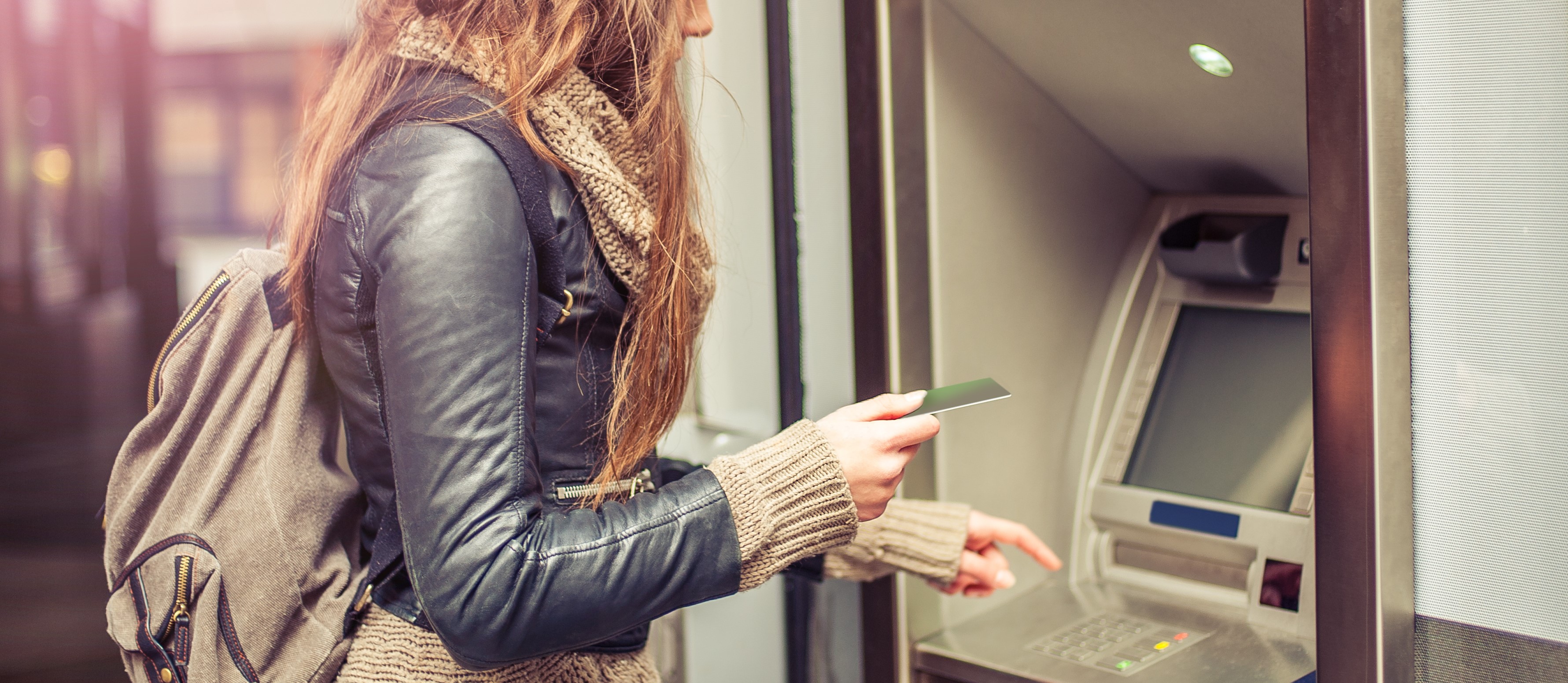April 24, 2018

Although the majority of credit card fraud has moved online, credit card and ATM skimmers are still used by a large number of thieves and skimming attacks are here to stay. Skimmers fool a lot of people, and it can be hard to avoid falling victim to this particular insidious attack. Additionally, some thieves are now using devices called "shimmers," which are literally inserted inside the ATM or POS device. Skimmers do not prevent the terminal from working normally. So, how do you spot and avoid skimmers? Here are some things to consider when inspecting your ATMs for problems.
1. ATM card readers generally match the rest of the machine in appearance and color. If the card reader is an obvious mismatch, this is likely to indicate that it is a skimmer. Also, learn the appearance of your bank's ATMs. If the card reader does not look like what you expect, go to a different ATM.
2. Jiggle the card reader a little. If it is loose, that could indicate that it is not properly attached, a classic sign of it being a skimmer. In fact, skimmers will often come right off if given a good enough tug. This is a good idea if you are responsible for the ATM concerned, as you might be able to remove the skimmer right away. Many modern skimmers have Bluetooth and are sending data live, but if they are not, then you can confiscate the skimmer and possibly have your employees or the police watch for the criminal's return.
3. Does the bottom panel look different? That can indicate thieves have put an overlay over the PIN pad, a more accurate way of capturing pins than the hidden camera more often used. Also look for any thickening of the keypad. Tap the keypad. The keys should not be loose or spongy.
4. Are the graphics and logos where they should be and properly aligned? Misaligned graphics can also give away the presence of a skimmer. Look to see if the ATM matches the one next to it. Thieves generally only put a skimmer on one of a row of ATMs.
5. Does the card reader flash? Skimmers often hide the card entry indicator. Also look at how far out the reader protrudes. Many skimmers make it look like it sticks out further.
6. Check for hidden cameras. Thieves often hide a camera near an ATM so as to capture PIN numbers. Cameras can be hidden all over the place. One favorite trick is to partially tug out the audio jack, so make sure it is in place.
 |
7. As thieves need to be unobserved both to install the skimmer and to collect the data it has gathered, they tend to choose ATMs that are in less trafficked areas. Gas pumps are also particularly appealing. Make sure to check pumps that are further from the store entrance or out of sight of the cashier. Truck diesel pumps are often out of line of sight. Consider installing cameras to watch more distant pumps. If you do so, post signs saying cameras are in place.
8. Avoid using magstripe readers. Most cards now have chips on them - use them. It's harder to crack an EMV reader. Also, if you run a chip card through a magstripe reader and there is any fraud, you are liable for the full amount, part of a 2016 law designed to discourage the continuing use of magnetic stripes.
9. Encourage customers to use their credit card to pay for things like gas, not your debit card. If your debit card is compromised, then you only have two days to report the unauthorized charges, and even then you're out $50. If your credit card is, chances are your credit card company will be reporting the theft to you. Somebody with your debit card and pin may also be able to get into a savings account or a business account. Banks can and should remind customers that running a debit card as a credit card is more secure.
10. Don't forget vending machines. Vending machines are often tucked away in odd corners. Hotel vending machines may be particularly vulnerable. If buying something from a vending machine that takes cards, consider using cash.
11. When possible, go to gas stations that look to be well cared for and clean. The cleaner the place, the higher the chance that the proprietor has spotted and dealt with any tampering. Another good tip is to select gas stations that are open and manned 24/7. Thieves will tend to avoid these in favor of ones that close at night.
12. When buying food at a restaurant, watch the waiter scan your card if possible. Do not allow wait staff to keep your card for the duration of the meal. Some restaurants try to do this to prevent dine and dash, but it gives an unscrupulous waiter plenty of chance to skim your card. Restaurants are probably better served avoiding this policy. This can happen at everything from fast food to fine dining. It can also sometimes happen in retail stores, although less commonly as it is hard for the cashier to get out of sight with the card. Be particularly suspicious if a waiter puts your card in their apron. If you are running a restaurant, watch how your waiters handle customer cards and be suspicious of somebody who seems to be getting an influx of cash.
13. Accept contactless payment. Because there's no card involved, normal skimmers do not work if you are "swiping" your phone. This may not be an option for everyone, but a growing number of customers prefer the contactless method.
14. Always have an employee watching the self checkout or similar point of sale, especially if you are running without traditional cashiers.
15. Finally, always keep an eye on your credit card transactions. Check regularly, and also make sure to do extra checks if you have traveled out of your area or overseas (not just for fraud, but for billing mistakes and unexpected charges). When you are traveling, you eat out more, buy more gas, and thus give thieves more opportunities to skim your card. In many cases, your credit card company will be on top of the fraud and spot it, but it is still a good idea to check.
Merchants, bankers, and customers all have a responsibility to reduce credit card skimming and make the lives of these thieves difficult. Today, cyber attacks and data breaches attract a lot of attention, and many banks forget that old fashioned card skimming is not only still a thing but actually increasing in some areas. If you need more advice, then contact Lorman Education Services.
Sources:
https://www.lifelock.com/education/how-to-avoid-credit-card-skimming/
https://www.nerdwallet.com/blog/banking/avoid-credit-card-skimmers/
https://www.bankrate.com/finance/credit-cards/ways-to-protect-from-card-skimmers-1.aspx#slide=2
https://www.techrepublic.com/blog/five-apps/five-tips-to-avoid-debit-credit-card-skimming/
https://www.forbes.com/sites/johnnyjet/2018/01/30/6-tips-to-help-avoid-card-skimming-at-atms-while-traveling/#38a6b09b2992